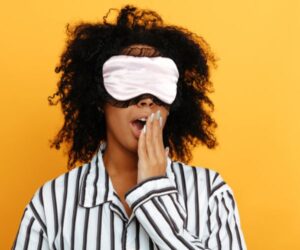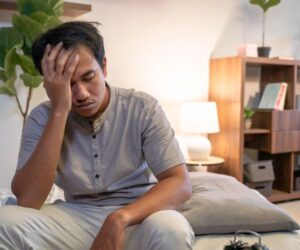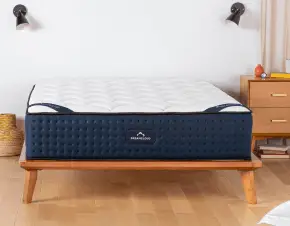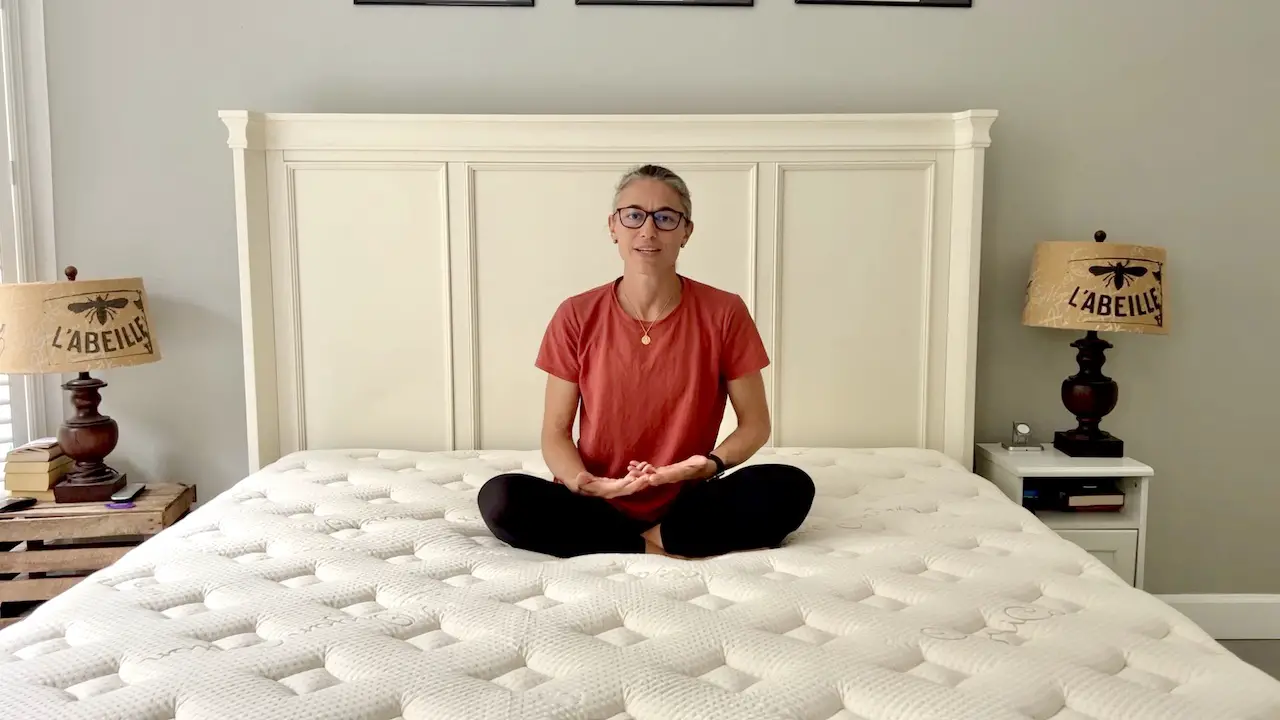BLUE LIGHT AND SLEEP
Understanding the Impact and How to Protect Your Rest
In today’s digital world, screens have become a constant presence, whether through our phones, tablets, computers, or televisions. While these devices enhance our daily lives, their blue light emissions can have a significant impact on sleep.
Let’s dive into the connection between blue light and sleep, and discover simple steps you can take to ensure that screens don’t get in the way of a good night’s sleep.
Table of Contents
What Is Blue Light?
Blue light is a part of the visible light spectrum, which includes all the colors that the human eye can perceive. Blue light has a short wavelength, which gives it high energy. While all visible light can have an effect on our eyes and our biology, blue light is unique in how it interacts with our bodies and brains.
Blue Light in Natural and Artificial Environments
Blue light is naturally present in sunlight, where it plays an important role in regulating our body’s internal clock, or circadian rhythm. Exposure to natural blue light during the day helps keep us alert, boosts our mood, and regulates sleep-wake cycles. However, in the evening, when our bodies are naturally winding down, blue light exposure can become problematic.
Artificial sources of blue light include LED and fluorescent lighting, but one of the biggest sources today is digital screens. Our smartphones, computers, tablets, and TVs emit blue light, and when used extensively, especially in the evening, they can interfere with our natural sleep processes.
What Emits Blue Light?
Understanding what emits blue light can help identify the sources we may need to manage, especially in the evening.
Common Sources of Blue Light
- Sunlight: The sun is the largest natural source of blue light, which helps regulate our internal clock.
- LED and Fluorescent Lighting: These are common in homes, offices, and public spaces, providing energy-efficient light but with high levels of blue wavelengths.
- Digital Screens: Phones, tablets, laptops, televisions, and other digital screens are significant blue light sources, and frequent screen time contributes to prolonged exposure.
- Energy-Efficient Bulbs: Compact fluorescent lights (CFLs) and LEDs used as alternatives to traditional incandescent bulbs also emit blue light.
The prevalence of these sources means that many people have substantial exposure to blue light throughout the day and into the evening, leading to potential impacts on sleep health.
Does Blue Light Affect Your Sleep?
Yes, blue light can indeed affect sleep. While daytime exposure to blue light is beneficial for staying alert and awake, nighttime exposure has the opposite effect. When we expose ourselves to blue light in the evening, it can interfere with our body’s ability to produce melatonin, a hormone crucial for sleep.
Blue Light’s Influence on Melatonin Production
Melatonin is a hormone produced by the pineal gland in response to darkness. It signals to the body that it is time to relax and prepare for sleep. However, exposure to blue light before bed can inhibit melatonin production, delaying sleep onset and reducing sleep quality. Even small amounts of blue light exposure before bed can shift the body’s internal clock, making it harder to fall asleep at a consistent time.
Research has shown that even brief exposure to blue light can significantly reduce melatonin levels. For those who frequently use screens in the evening, this can result in a delayed sleep cycle and potential sleep deprivation.
How Does Blue Light Affect Sleep?
The primary way blue light affects sleep is by disrupting the circadian rhythm, our body’s internal clock. This rhythm follows a roughly 24-hour cycle, responding to natural cues like sunlight to regulate our sleep-wake pattern.
Circadian Rhythm and Sleep Quality
When we are exposed to blue light, particularly in the evening, it tricks our brain into thinking it’s still daytime. As a result, our body reduces melatonin production, making us feel more alert and delaying the onset of sleep. When this cycle is repeatedly interrupted by nighttime blue light exposure, it can lead to:
- Difficulty Falling Asleep: Without enough melatonin, it becomes harder to relax and drift off.
- Shorter Sleep Duration: Late-night blue light exposure can delay falling asleep, reducing overall sleep time.
- Reduced Sleep Quality: Even when we do sleep, it may not be as restful if our circadian rhythm has been disrupted.
Studies have also shown that blue light exposure can impact deep sleep stages, which are essential for physical recovery and mental restoration. Over time, inadequate or poor-quality sleep can affect cognitive function, mood, and even immune health.
Is There a Safe Amount of Blue Light?
While blue light during the day can enhance alertness and mood, limiting exposure at night is essential for good sleep health. Currently, there’s no exact “safe amount” of blue light exposure at night that fits everyone, but there are general guidelines you can follow to protect your sleep.
General Recommendations for Blue Light Exposure
Experts generally advise minimizing screen use at least one to two hours before bed. This allows melatonin levels to rise naturally and prepares the body for sleep. However, if using screens is unavoidable, certain measures can help reduce the impact:
- Use Blue Light Filters or “Night Mode” Settings: Many devices have blue light filters that shift screen lighting to warmer tones.
- Consider Blue Light-Blocking Glasses: These glasses are designed to filter out blue wavelengths, providing a way to mitigate blue light exposure while still using screens.
- Limit Evening Screen Time: The less time spent on screens at night, the lower the potential impact on sleep.
Practical Tips to Reduce Blue Light Exposure Before Bed
Taking proactive steps to reduce blue light exposure before bed can make a significant difference in your sleep quality. Here are some effective strategies:
1. Invest in Blue Light-Blocking Glasses
Blue light-blocking glasses are specifically designed to reduce the amount of blue light that reaches your eyes. They can be particularly helpful for people who need to use screens in the evening. Look for glasses that block wavelengths in the 400-500 nm range, as these are most effective for evening use. You will find models for under $10, which is a well worth investment.
2. Enable “Night Mode” on Your Devices
Many smartphones, tablets, readers, and computers come with a “Night Shift” or “Night Mode” setting. This feature adjusts the screen’s color temperature, reducing blue light and making the screen warmer. Enabling this setting in the evening can help reduce blue light exposure while still allowing you to use your devices.
3. Dim or Switch Your Lighting to Warm Tones
If you use LED or fluorescent lighting in the evening, consider switching to lamps with warm, dimmable bulbs, which emit less blue light. This can create a more sleep-friendly environment by mimicking the gradual transition to darkness.
4. Set a Technology Curfew
Establishing a technology curfew by turning off screens at least one to two hours before bed can significantly improve sleep quality. Use this time for other relaxing activities, such as reading a physical book, meditating, or enjoying a warm bath. View our ideal 7PM to 10PM bedtime routine, for a consistent and successful approach to going to bed.
What Color Light Is Best for Sleep?
Light color plays a crucial role in sleep health. While blue light is stimulating, warmer hues like red and amber have a calming effect and are less likely to interfere with melatonin production.
Red or Amber Light for Better Sleep
Red or amber lights are recommended for evening use because they have minimal impact on melatonin levels. Studies suggest that these warmer hues are less disruptive to sleep compared to blue and white light. Amber or red-toned nightlights, for example, can provide enough visibility without disturbing your body’s sleep signals.
Avoiding White and Blue Light in the Evening
If you need light in the evening, avoid white or blue-tinged lighting. Instead, opt for warm, dim lighting that mimics the natural decrease in sunlight at dusk. Limiting exposure to bright white or blue light after sunset can reinforce your body’s natural inclination to wind down, promoting a smoother transition to sleep.
Blue Light And Sleep - Conclusion
Blue light has become an unavoidable part of modern life, but understanding how it affects sleep allows us to make better choices for our sleep health. By reducing evening exposure to blue light, you can promote a more natural sleep-wake cycle and enjoy better rest.
Simple changes, like using blue light-blocking glasses, enabling night mode on devices, and choosing warmer lighting options, can help minimize blue light’s effects on your sleep. With the right adjustments, you can enjoy the benefits of technology without letting it interfere with your body’s need for restorative sleep.
In a world of constant digital connectivity, protecting our sleep from the effects of blue light is essential. Make these small changes today to improve your sleep quality and feel more refreshed each morning.
References
- WebMD. (2022). How To Manage Blue Light For Better Sleep. Retrieved from https://www.webmd.com/sleep-disorders/sleep-blue-light
- National Library of Medicine. (2022). The Influence Of Blue Light On Sleep, Performance and Well-Being In Young Adults. Retrieved from https://pmc.ncbi.nlm.nih.gov/articles/PMC9424753/
- UC Davis Health. (2022). How Blue Light Affects Your Eyes, Sleep, and Health. Retrieved from https://health.ucdavis.edu/blog/cultivating-health/blue-light-effects-on-your-eyes-sleep-and-health/2022/08
FAQ
Most frequent questions and answers
Blue light exposure, especially in the evening, suppresses melatonin production, a hormone that signals the body to prepare for sleep. This disruption can make it harder to fall asleep and impact sleep quality.
Yes, consistent exposure to blue light at night may lead to chronic sleep problems by disrupting the natural circadian rhythm, which can affect overall health over time.
Yes, devices like smartphones, tablets, and computers emit significant amounts of blue light, along with LED and fluorescent lights commonly used indoors.
Blue light-blocking glasses can reduce exposure, but for optimal sleep benefits, it’s still recommended to avoid screens an hour or two before bed.
Warm light colors, such as red or amber, are best before bed as they have minimal impact on melatonin production, promoting a more restful sleep environment.
How does blue light affect melatonin production?
Blue light exposure, especially in the evening, suppresses melatonin production, a hormone that signals the body to prepare for sleep. This disruption can make it harder to fall asleep and impact sleep quality.
Can blue light exposure cause long-term sleep issues?
Yes, consistent exposure to blue light at night may lead to chronic sleep problems by disrupting the natural circadian rhythm, which can affect overall health over time.
Are there specific devices that emit more blue light?
Yes, devices like smartphones, tablets, and computers emit significant amounts of blue light, along with LED and fluorescent lights commonly used indoors.
Is it safe to use blue light before bed if I wear blue light-blocking glasses?
Blue light-blocking glasses can reduce exposure, but for optimal sleep benefits, it’s still recommended to avoid screens an hour or two before bed.
What color light should I use before bedtime?
Warm light colors, such as red or amber, are best before bed as they have minimal impact on melatonin production, promoting a more restful sleep environment.
Share this deal with a friend!

Laura Georgieff
Laura is a mother of three who did not sleep through the night for the first 5.5 years of her kids' lives. She is passionate about sleep quality and loves sharing her experience and knowledge of all thing bedding! It is her mission to help you make the best decisions when it comes to sleep and help you get the best deal on the market!






